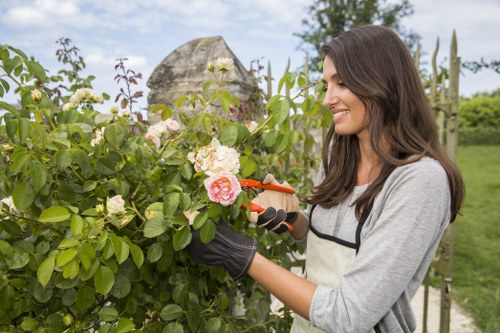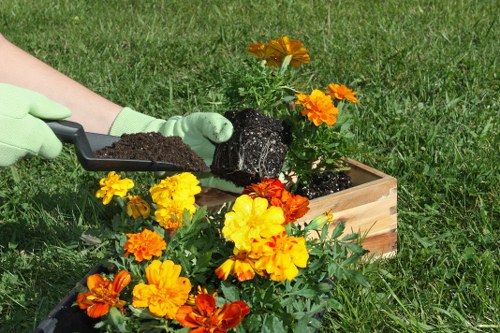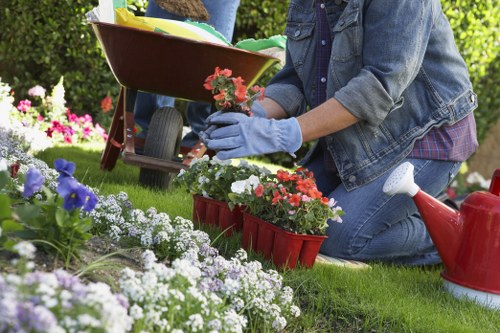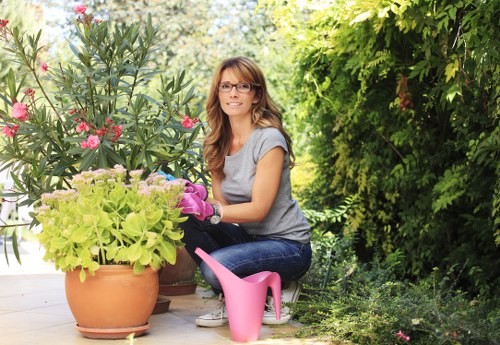Mastering Landscaping in Garden Maintenance: Achieving a Vibrant Garden
Introduction to Garden Landscaping

Landscaping in garden maintenance is more than just an aesthetic pursuit—it is a lifestyle that blends creativity with practical care to create a sanctuary that evolves with the seasons. Garden maintenance encompasses planning, design, plant selection, and routine care, all of which contribute to a thriving outdoor space. This article delves into the layered approach required for exceptional landscaping and offers insights that enhance overall garden appeal. Whether you are a first-time gardener or a seasoned landscaper, understanding these fundamentals can transform a simple yard into an enchanting retreat. Investing time in landscaping not only beautifies your home but also supports local biodiversity and improves environmental health.
Many homeowners often overlook the deep connection between landscaping and garden maintenance. When treated as an ongoing project rather than a one-time commitment, garden landscaping becomes a dynamic process. This dynamic nature requires a regular review of plant health, soil quality, and design adaptability. Effective maintenance means scheduling seasonal tasks, integrating crop rotation in vegetable patches, and using organic methods to strengthen plant resilience. With these practices, any garden can be nurtured into a living work of art that evolves gracefully over the years.
Understanding the essential role of landscaping in garden maintenance opens up a world of possibilities. From small backyard transformations to expansive public landscapes, every element must be harmoniously balanced. By integrating structure with nature, landscapers can design outdoor spaces that are both functional and visually captivating. As we explore the subsequent topics, keep in mind that successful garden upkeep relies on a well-thought-out strategy combining design innovation, meticulous planning, and sustainable practices. The benefits of these efforts extend far beyond the surface, instilling a sense of pride and well-being in every gardener.
Planning and Design Strategies for Effective Landscaping

The cornerstone of successful landscaping in garden maintenance is sound planning and design. A well-thought-out blueprint is essential to guide every step of the maintenance process. The initial phase includes extensive research on regional climate, soil type, and native flora. Design strategies benefit from modern technology and expert consultations as well as traditional garden design principles. Incorporating principles like balance, unity, and focal points can elevate your landscaping efforts. Essential questions to ask include: What is the primary function of the space? Which elements are pivotal to the aesthetic appeal? By answering these questions, gardeners can develop a strategic plan that is both practical and visually pleasing.
When planning your garden, consider the seamless integration of hardscape and softscape elements. The synergy between these two design areas can create a safe, walkable, and sustainable environment. For instance, pathways made of natural stone or recycled materials can lead visitors to differently themed areas such as zen gardens or wildflower meadows. Modern gardeners often opt for a mix of traditional and contemporary design influences that epitomize the evolving character of home landscaping. Utilizing digital design tools and sketches helps in visualizing the potential layout, ensuring that every feature has its rightful place in the final design.
Moreover, planning and design are iterative processes that require flexibility and creativity. As planting seasons change, so might the desired function or look of the garden space. Emphasizing a modular design allows gardeners to modify the layout easily with minimal expense and effort. This type of adaptive design not only provides room for experimentation but also makes long-term maintenance less cumbersome. Gardeners who follow these guidelines will find that integrating thoughtful design into everyday maintenance practices leads to a resilient and breathtaking landscape.
Plant Selection and Soil Management: Key Elements for Garden Success

Choosing the right plants is an indispensable part of landscaping in garden maintenance. The selection process is guided by regional climate, soil composition, available light, and water resources. Plant selection is both an art and a science, aimed at ensuring that species not only coexist harmoniously but also thrive together. Gardeners must consider vibrant flowering plants, sturdy shrubs, and resilient groundcover species as part of a comprehensive maintenance plan. Understanding your local ecosystem and investing in native or well-adapted plant species will result in a garden that requires lower maintenance and is more resistant to disease and pests.
Soil management is the backbone of any flourishing garden. A well-amended soil bed provides the perfect environment for roots to grow and plants to flourish. Regular maintenance routines now include periodic soil testing, composting, and the necessary addition of minerals. Effective soil management ensures that your plants receive adequate nutrients and moisture throughout the year. Advanced techniques such as crop rotation, cover cropping, and the application of organic fertilizers can also reduce the dependency on chemical treatments, promoting a healthier garden ecosystem.
Expanding on soil and plant care, it is critical for gardeners to adopt a customized maintenance schedule. This schedule should detail the frequency of watering, pruning, and fertilizing for each plant variety. Effective garden care relies on monitoring environmental factors and making the appropriate adjustments. Incorporating tools like moisture meters, pH testers, and even mobile apps can assist in providing data-driven insights about your garden's needs. By following a systematic approach, you can ensure optimal soil health and vibrant plant growth all year round.
Maintenance Techniques and the Essential Tools for Garden Care

Routine maintenance is the heart of effective landscaping in garden maintenance. A combination of regular watering, fertilizing, weeding, and pruning is required to create a nurtured environment for plants. Modern maintenance techniques go beyond basic care—they embrace a scientific understanding of plant biology and the interaction of environmental variables. Gardening tools and equipment have evolved tremendously, allowing gardeners to perform tasks more efficiently, ensuring that their landscapes maintain both beauty and functionality. Whether it is by hand or with the assistance of advanced automated systems, understanding these techniques is crucial for sustained growth.
The array of available tools is extensive, and selecting the right instruments can significantly influence garden maintenance outcomes. Tools such as pruning shears, spades, and rakes are essential for routine tasks, while more sophisticated equipment like mulchers and lawn mowers create a polished appearance. For those who prefer a methodological approach, creating a checklist helps in keeping track of the various duties involved in garden upkeep. The right mix of traditional and modern diagnostic tools can further ensure that gardeners promptly address problems like disease, pests, or nutrient deficiencies.
In addition to practical tools, maintenance encompasses a mindset of proactive observation. Gardeners are encouraged to maintain a detailed log of work done, improvements observed, and challenges encountered. This documentation aids in tracking the effectiveness of different maintenance techniques over time. Seasonal adjustments and holiday breaks play an essential role in recalibrating garden routines. Integrating these practices into your routine not only streamlines garden care but also offers the opportunity to experiment with enhanced landscaping techniques—a strategy that may very well lead to a transformative and sustainable garden design.
Sustainable Practices and Future Trends in Garden Landscaping

The future of landscaping in garden maintenance is deeply intertwined with sustainability. With increasing environmental challenges, eco-friendly approaches are becoming not just desirable, but essential. Gardeners are now embracing techniques that reduce water consumption, minimize plastic use, and foster a biodiverse habitat. Sustainable gardening involves practices like rainwater harvesting, the use of solar-powered lighting, and organic pest control. Incorporating these practices allows gardeners to minimize negative environmental impacts while still enjoying a lush and vibrant landscape. Investing in green technology is not only a nod to environmental responsibility but also a sound long-term financial strategy.
Future trends in garden maintenance reveal a growing synergy between technology and nature. Innovations such as smart irrigation systems, automated lawn care, and AI-driven landscaping apps are revolutionizing traditional gardening methods. These applications provide real-time updates on moisture levels, weather changes, and pest invasions, allowing gardeners to act swiftly. This blend of tech-savvy solutions with time-tested horticultural traditions creates a robust framework for minimizing human error and maximizing environmental quality. As we revolutionize garden maintenance, a commitment to eco-friendly principles remains paramount in driving these advancements.
Embracing the future does not only mean investing in technology but also cultivating a mindset geared toward continual learning and adaptation. The integration of sustainable practices within garden maintenance paves the way for research and development aimed at reducing the environmental footprint of landscaping activities. Educators and experts are continuously exploring novel ways to marry nature with modern technology, promoting both productivity and ecological balance. Join the movement toward a greener future by exploring innovative methods, adopting new tools, and participating in community events focused on sustainable gardening. Contact us today for more actionable insights and detailed consultations on evolving your outdoor spaces with these cutting-edge methodologies.

